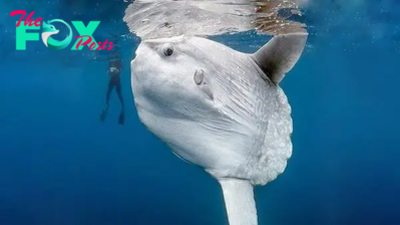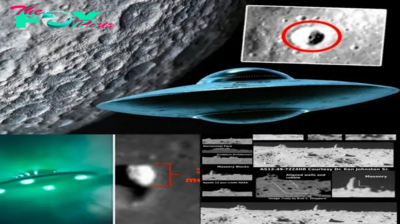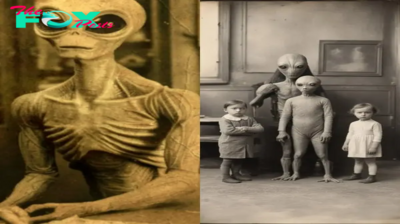Weird Animals
nht.Why do you believe aliens should resemble humans?
The question of extraterrestrial life has fueled human curiosity for centuries, and as we contemplate the possibility of aliens, one recurring assumption is that they must have a humanoid form. In this exploration, we challenge this anthropocentric perspective and delve into the diverse theories and considerations surrounding the concept of extraterrestrial life forms.

Humanoid Bias in Popular Culture: From science fiction novels to blockbuster movies, the portrayal of aliens often leans towards humanoid features, with two legs, two arms, and a head. This anthropomorphic bias in popular culture may stem from our limited understanding of life and the tendency to project familiar attributes onto the unknown. But is there a valid reason to assume that extraterrestrial life must conform to human-like forms?
Biological Adaptations to Alien Environments: One argument against the notion of humanoid aliens revolves around the adaptability of life forms to their respective environments. Earth’s diverse ecosystems showcase an array of life forms, each uniquely shaped and adapted to thrive in specific conditions. Extraterrestrial environments, if they exist, might have drastically different atmospheric compositions, gravitational forces, and energy sources, prompting the evolution of life forms with entirely non-humanoid structures.
Silicon-Based Life Forms and Alternative Biochemistries: The foundation of life on Earth is carbon-based, but scientists hypothesize that alternative biochemistries might exist elsewhere in the cosmos. Silicon, for instance, shares some chemical similarities with carbon and could potentially serve as a basis for extraterrestrial life. Imagining silicon-based life forms challenges the humanoid bias and expands our understanding of the potential diversity in the universe.
Energy Beings and Non-Corporeal Entities: Another intriguing perspective challenges the assumption that extraterrestrial life must possess physical bodies. Concepts such as energy beings or non-corporeal entities propose the existence of life forms that transcend traditional biological constraints. These entities might manifest as pure energy, consciousness, or interdimensional entities, defying the expectation of humanoid physicality.
Non-Visual Communication and Perception: Humanoid bias also extends to our assumptions about how extraterrestrial life might communicate or perceive the world. The reliance on visual and auditory senses may limit our understanding of potential alien communication methods. If, for instance, aliens possess senses beyond our comprehension, their forms and modes of interaction could be vastly different from our own, challenging the humanoid paradigm.
Scientific Search for Alien Life: In the scientific pursuit of identifying extraterrestrial life, researchers explore environments in our own solar system and beyond that could harbor life. The focus extends beyond humanoid forms, encompassing the search for microbial life, extremophiles, and unique biochemistries that may exist beyond Earth. Scientists are open to the possibility of encountering life forms that defy preconceived notions of humanoid structure.
The assumption that aliens must have a humanoid form reflects our inherent human-centric perspective. As we expand our scientific understanding and explore the vastness of the cosmos, it becomes increasingly crucial to embrace diverse possibilities. Extraterrestrial life, if it exists, may manifest in forms and structures beyond our imagination. By challenging the humanoid bias, we open ourselves to a more inclusive exploration of the potential life forms that might inhabit the far reaches of the universe.
-

 Weird Animals4m ago
Weird Animals4m ago.Deep Sea Wonder: 22ft Circular White Fish Charms Diver, Becomes Social Media Sensation..D
-

 Weird Animals4m ago
Weird Animals4m agonht.The astonishing discovery of an alien mummy, perfectly preserved as if alive, shocked everyone.
-

 Weird Animals4m ago
Weird Animals4m agonht.Discover the chilling tale of the 1818 UFO crash and the lost portal to another planet.
-

 Weird Animals4m ago
Weird Animals4m agonht.Uncovering Lunar Mysteries: Ex-NASA Insiders Claim Extraterrestrial Presence in Lunar Structures
-

 Weird Animals4m ago
Weird Animals4m agonht.Today’s breaking news: a mysterious floating city-like UFO discovered in Dulali village has caused widespread panic.
-

 Weird Animals4m ago
Weird Animals4m ago.The Astonishing and Terrifying Experience of Coming Face to Face with a 4-Meter Octopus!..D
-

 Weird Animals4m ago
Weird Animals4m agonht.Breaking News: Documentaries Uncover UFO Crashes in the Desert
-

 Weird Animals4m ago
Weird Animals4m agonht.Breaking news: Utah woman claims to have raised abducted aliens since 1923, shocking everyone.






















